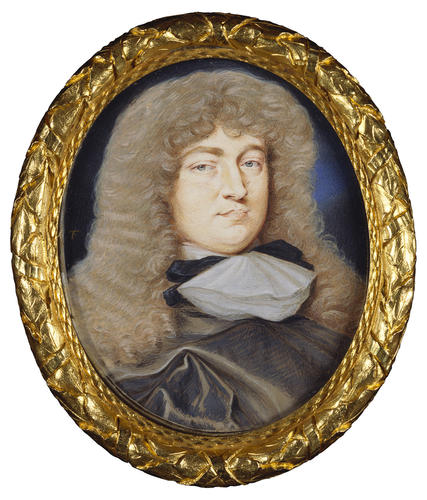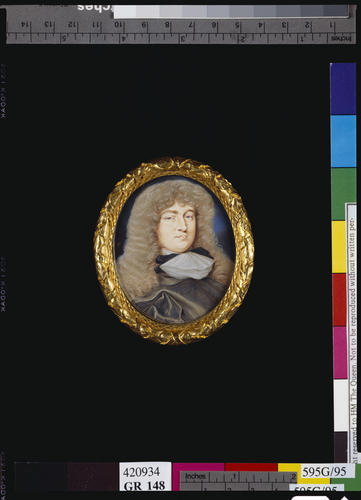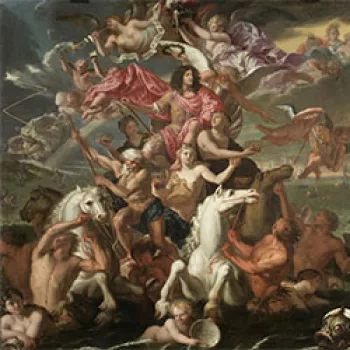John Maitland, Duke of Lauderdale (1616-1682) c.1670-5
Watercolour on vellum laid on card with a gessoed back | 6.4 x 5.1 cm (support, canvas/panel/stretcher external) | RCIN 420934
-
John Maitland (1616–82), Covenanter and later Secretary for Scotland, and a member of the Cabal, was made Duke of Lauderdale in 1672. He was instrumental in the reestablishment of the Palace of Holyroodhouse as the king's residence in Scotland after the Restoration. Working with the architect, Sir William Bruce (c.1630–1710), he became the driving force behind the rebuilding of the Palace. Maitland had fought for Charles II at the battle of Worcester, and after the Restoration he was rewarded for his loyalty when the king appointed him Secretary of State for Scotland and King's Commissioner, making him Charles's personal representative to the Scottish Parliament, and effectively the head of government in Scotland. At Holyroodhouse, Maitland was permitted to use the royal apartments in the king's absence, as well as his own extensive suite of privy lodgings, located next to the Privy Council Chamber. Bishop Burnet described him as 'very big; his hair red, hanging oddly about him; his tongue too big for his mouth', attributes that are not apparent in this dignified portrait.
Thomas Flatman was a gentleman miniaturist, pursuing his career in tandem with a successful practice as a lawyer, and with his other interests as a poet, pamphleteer, and member of the Royal Society. Despite this, miniatures painted by Flatman have been extolled as amongst the 'very finest painted in the seventeenth century', and his broad style and penetrating characterisation have earned him the justifiable claim to be seen as the natural successor of Samuel Cooper as the leading miniaturist of the late-seventeenth century.
Little is known about his training, and the wiry, elongated hatching which distinguishes his technique has been taken to indicate that he may have learnt to paint miniatures from engravings or from one of the printed handbooks available at the time rather than in a studio setting. This miniature is a characteristic example of his style, dating from the early 1670s when he was producing some of his finest work (see, for example, his Self Portrait, 1673, Victoria and Albert Museum, London, P79-1938).
Signed on the left in gold: 'TF' (monogram)
Text adapted from Charles II: Art and Power, London 2017.Provenance
Bought for the Royal Collection by Queen Victoria in 1878
-
Medium and techniques
Watercolour on vellum laid on card with a gessoed back
Measurements
6.4 x 5.1 cm (support, canvas/panel/stretcher external)
7.9 x 6.7 cm (frame, external)
Category
Object type(s)
Other number(s)
Reynolds 1999 : Reynolds, G., 1999. The Sixteenth & Seventeenth Century Miniatures in the Collection of Her Majesty the Queen, London – Reynolds 1999 148Cust 1910 : Cust, L., 1910. Windsor Castle: Portrait Miniatures, London – Cust 1910 II/98










